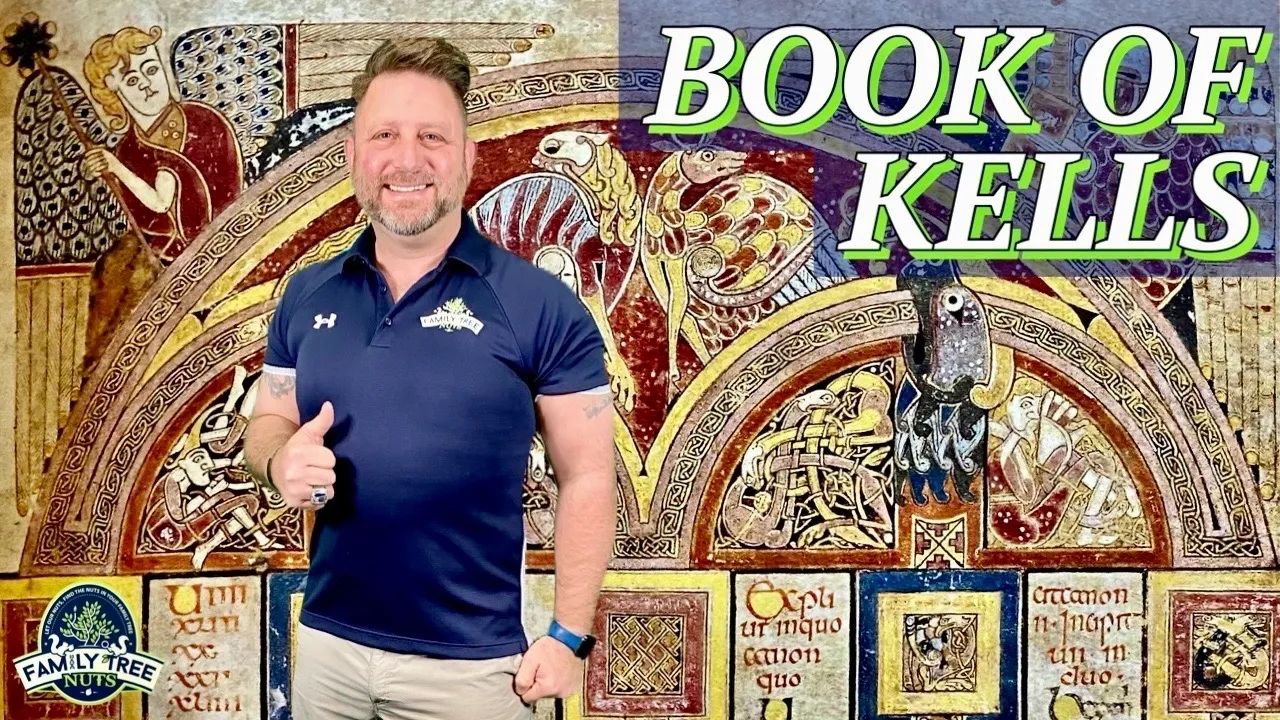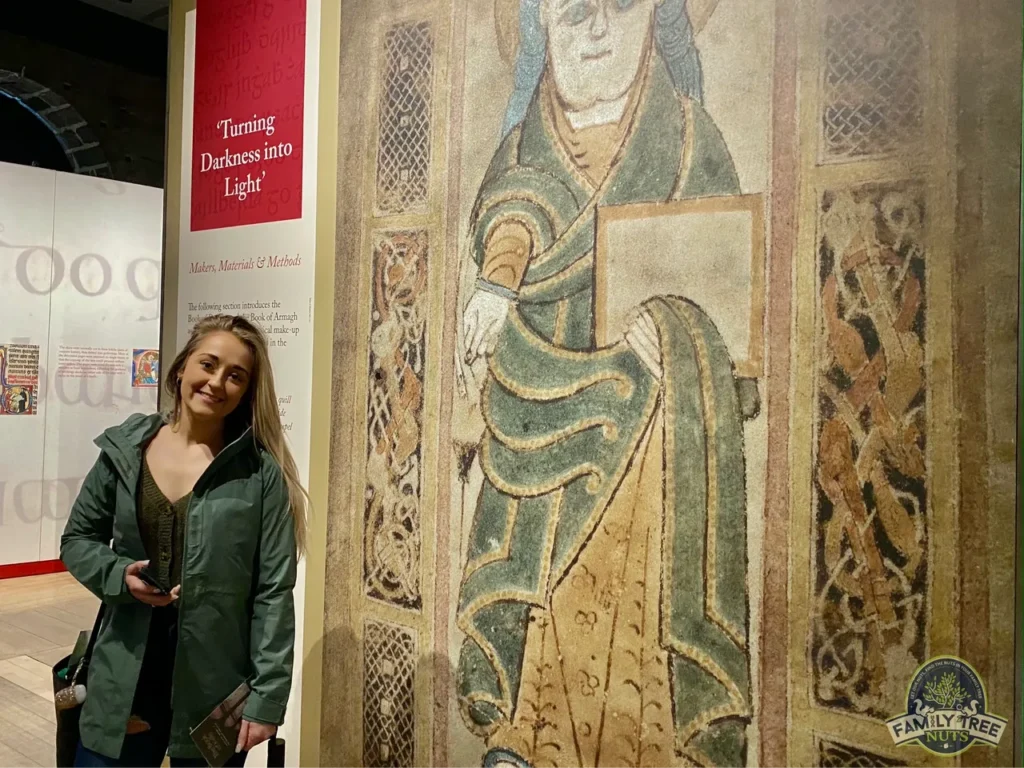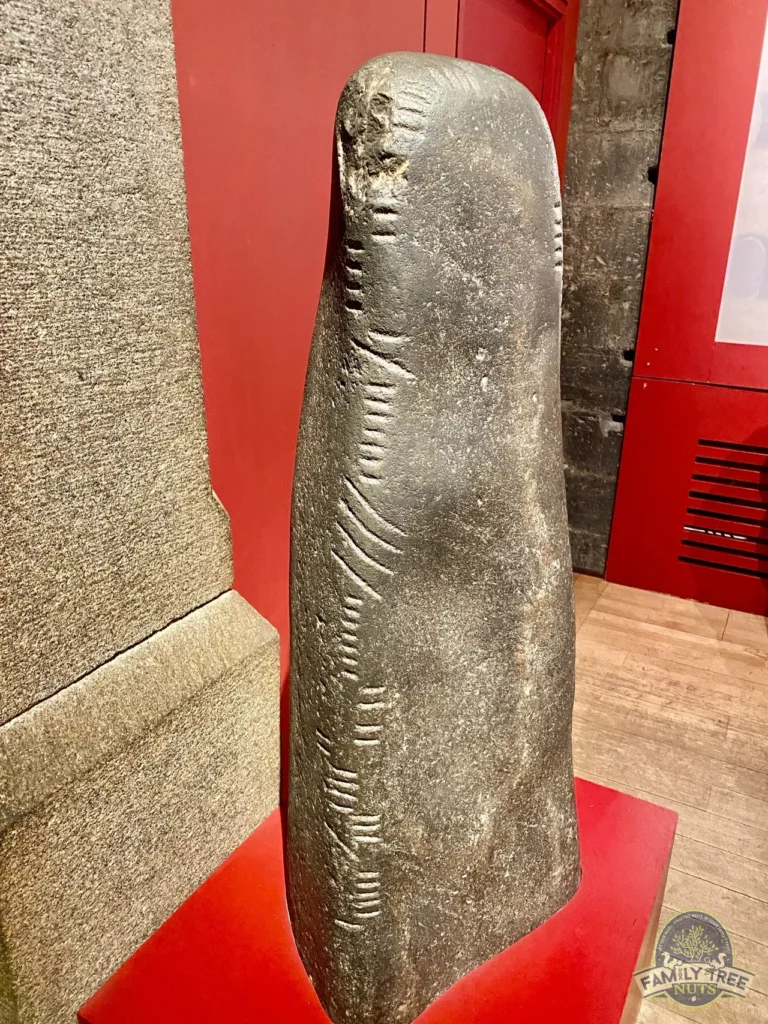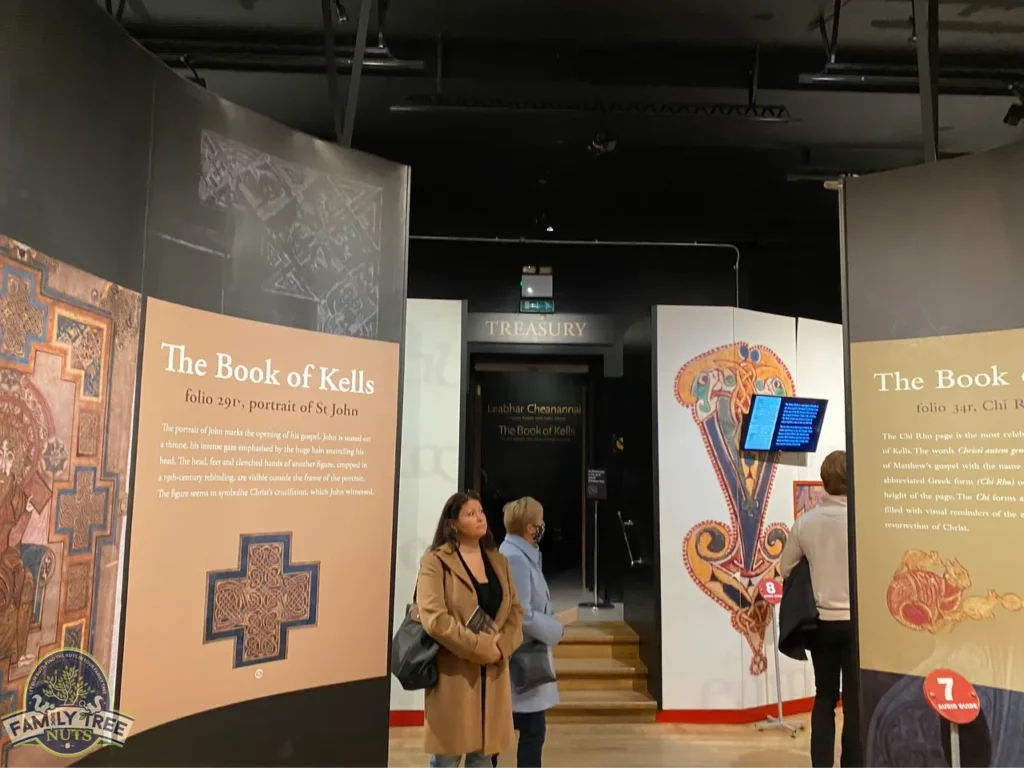
1,200 YEAR OLD BOOK OF KELLS IN DUBLIN, IRELAND
Turning the darkness into light. That was the goal of early Christianity and the dedicated monks who worked tirelessly to document the gospels of Jesus Christ. Today the Book of Kells is a symbol of national Irish pride and one of the countries most sacred historical objects.

Recently we visited the historic Trinity College in Dublin, Ireland which is the permanent home of the Book of Kells and its incredible exhibit. The Book of Kells was written by Irish monks, most likely on the island of Iona, around the year 800 AD. The book is sometimes called the Book of Columba because it was originally thought to be written during the time of St. Columba and possibly even by his own hand. St. Columba was an Irish abbot and missionary who lived between the years 521 and 597, and he evangelized in Scotland. Some say that the book was written to commemorate the 200th anniversary of St. Columba’s death.
The Book of Kells contains summaries of the Gospels of Jesus Christ and is written in Latin. It is ornately decorated with figures of Celtic knots, designs, humans, animals and mythical creatures. Its beauty has caused it to be called, “the work of angels”. Contained in the book are 340 leaves or folios in Latin, which are left-side and right-side pages of an open book. It must be mentioned that there is some “errors” or differences in its gospels than the bible that we are used to. Some of these differences change the meaning of the scripture. For example, we know in English, Matthew 10:34 states, “I came not to send peace, but a sword”, however in the Book of Kells, the scripture substitutes the word sword for joy, thus changing the meaning of the verse. It must also be noted that in the Latin, the words for sword and joy are only one letter different, and this was likely simply human error.

The Book of Kells was written on vellum, which is made from calf skins. It is estimated that it took the skins of 185 calves to provide enough vellum for the famous book. I wonder how it would be received today if the church produced a similar product using the same methods. It’s quite interesting to think of how differently people thought in different time periods.
During the time that the book was written, most everyone except the clergy and some political leaders were illiterate. Pope Gregory the Great had said that the beautiful illustrations in writing such as these, contribute to “a living reading of the Lord’s story for those that cannot read”. The monks lived a very simple life, deprived of conveniences and luxuries. Even their food was simple and plain. Through their piousness and simplicity of life, the monks were about to create many things of beauty. Besides writing many beautiful works, the monks around the British Isles wrote several pocket gospels to be used for missionary work. Books like the Book of Kells were used in special ceremonies or more official occasions and the pocket gospels were used in everyday life.
Before the use of Latin, writing in Celtic Ireland was what is called, Ogham script. Ogham was used since at least the fifth century and was made up of twenty characters, divided up into four groups of five, formed by combinations of one to five short lines and notches relative to a stem line. It is unclear if Ogham comes from the Latin alphabetic system or from pagan, pre-Christian system. Most Ogham inscriptions are commemorative and list a person’s name and tribe. Some say that they are boundary stones that separated territories. Ogham disappeared from use between the 8th and 9th centuries.
The Vikings began to raid the area in the year 795. In 802, Iona was attacked and burned and later in 806 the monastery in Iona was sacked. Sixty-eight monks were killed but a few escaped to the mainland in Ireland and took the Book of Kells with them. They set up another monastery in Kells, County Meath, Ireland. Viking raids continued all over the British Isles and in 920, just like Iona, Kells was destroyed by Vikings. It was once again sacked in 946 AD by Danes. The years of 951, 970, and 997 brought more attacks and destruction from those whom the Christians called “heathens”.
The Book of Kells was eventually incased with jewels all around it and in the year 1007, the book was stolen. It is said that two months and twenty nights later, it was found by a farmer in a field, but it’s case covered in jewels was missing. Kells was destroyed by fire in 1016, 1040, 1060, 1095, 1099, 1111, 1135, 1143, 1144, 1150, and 1156. So often in history, fire cleanses and brings on change.

It appears that four different monks, with individual styles worked on the transcript of the Book of Kells but they tried to keep everything in the same general theme. It also appears that there were three different artists to decorate it. The colors are fascinating and much speculation has taken place as to how the colors were made. Some have thought that materials used to make the colors were not native to Europe and had traveled a long way, but modern science appears to have debunked that theory and that all materials were likely local.
The Book of Kells stayed at its home in County Meath for 650 years until the invasion of Oliver Cromwell. Cromwell came from England and was of course a protestant. He was well known for turning catholic churches and cathedrals into horse stables for his occupying army. This was done all over Ireland and aimed at demoralizing and controlling the catholic Irish. In 1646, Henry Jones, the Vice-Chancellor of Trinity began the process to have the book moved from the church in Kells. It was moved in 1653 to where it is today in the library of Trinity College, in Dublin, Ireland.
The Book of Kells is part of a group of manuscripts that are Insular style, which is the post-Roman style of the British Isles. What makes the Book of Kells so important and well known, is it is by far the most ornate and decorated of these books. These books were written by monks in England and Scotland as well with two other ones written in Ireland known as the Book of Durrow and the Book of Armagh. The Book of Durrow was written around the year 700, and before each of the gospels is a symbol of the evangelist, a “carpet page” of decoration and an elaboration of the gospel’s opening words. The Book of Armagh which was written in 807 is the New Testament in Latin and Old Irish. This book is important to the story of St. Patrick and his role in Ireland. It has been rumored at one time to be partially written by St. Patrick but that has been proven unlikely.

Today anyone can visit the Book of Kells and its exhibit at historic Trinity College, in Dublin Ireland. The college has a very informative exhibit that includes many of the things you have been seeing in this video. You can lay your eyes on the book itself in the vault room, but we can’t show it to you in this video as no photography is allowed. The room is dark with a glass case in the middle, that displays the open book. The pages are periodically rotated. What an amazing experience it is to lay your eyes of a 1,200-year-old book!
Trinity College was founded in 1592 by Queen Elizabeth I, and until modern times was for protestants only. The college continues today as one of the most elite universities in the world and is home to several items of Irish pride. One of those items is the Brian Boru Harp, which is the oldest surviving Irish harp, and the insignia of Ireland. It was once mistakenly linked with Brian Boru, high king of Ireland who was killed in 1014 at the Battle of Contarf, in modern day Dublin. Also, on display is one of the last remaining copies of the 1916 Proclamation of the Irish Republic. This copy was posted to the wall of the General Post Office at the start of the 1916 Easter Rising, which eventually lead to Ireland’s independence from Great Britain.
Both the Brian Boru Harp and the 1916 Proclamation of the Irish Republic are on display in the Long Room. The Long Room is also called, Trinity College’s Old Library building, houses over 200,000 of the college’s ancient books. It was founded in 1732 and is in use to this day. Many have called the library, the “Harry Potter Library” because it looks very similar to the one in the very popular movies. Marble busts of prominent intellectuals line the ends of the book shelves.
Today the Book of Kells and Trinity College attracts approximately 750,000 visitors a year to see these historic wonders. To some, the Book of Kells is simply an old book, to others it is a sacred relic of the Holy Word of God. To others it is a symbol of pride for a nation of people that are one of the proudest on earth. To us all it should be an example of beauty and survival that has touched so many eras from our history. Be sure to see the video from here at the link below.
– Col. Russ Carson, Jr., Founder, Family Tree Nuts
